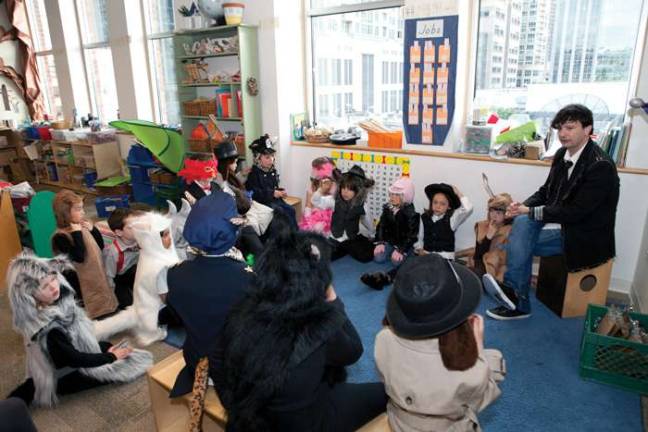Middle School Push as West Siders Go Back to School

As students back their backpacks and get ready for the school year that will kick off next week, parents and education advocates are gearing up to fight the continuing battle for quality public school education on the Upper West Side. While the neighborhood, part of Community Education Council District 3, enjoys some top-notch public schools, overcrowding and budget tightening are constantly threatening the balance. The biggest concern in the district is the lack of middle school space for future classes. All last year, parents pushed to get the Department of Education to look at projections that show severe middle school overcrowding in just a few years, adding 1,500 names to a petition asking for a middle school in the district, but so far the DOE has no plans to create one. "District 3 needs middle school space to meet the needs of the growing numbers of students entering middle school starting from the class of 2013, and the increased need for schools that have a curriculum to meet the growing needs of students who are scoring at proficient levels," said Christine Annechino, president of the district's CEC, which encompasses the Upper West Side as well as parts of West and Central Harlem. Council Member Gale Brewer also said middle school space is the biggest concern for Upper West Side parents. "There are so many kids that there's going to be no place for them," said Brewer. "The school at Riverside is not going to be able to handle all of them, and it's not going to be ready in time. People worry." The new K-8 school will be P.S. 342, slated to be built over the next several years at the Extell Riverside Center development on West 61st Street and West End Avenue. It is expected to teach 600 elementary and middle school students when it reaches its full capacity, but that will also be accounting for the influx of children moving into the new development, and won't necessarily solve in the overcrowding problem. Still, it will help, and advocates agree that a new school is a positive step. "It was an incredible process that led to an incredibly valuable asset for the community," said Mel Wymore, who was the chairperson of Community Board 7 when the board negotiated with Extell to agree to build the school. "From here, we as a community should continue to work with the DOE, the [School Construction Authority] and the developer to ensure that the school built best serves the community as a whole." But while the prospect of a new school is a bright spot for parents, there are still more immediate realities to contend with. Many Upper West Siders still feel they are pitted against charter schools in the district, and that the placement of charters within traditional school buildings is adding to overcrowding problems. Charters are public schools that are privately run. "When the DOE cheers for schools like Success Charter, don't they see that they are not cheering for any public schools? Is this fair if they don't work with the schools who are not charter schools and try to make them better?" said Annechino. "The disparity within the public, free school system is alarming, and District 3, which has been assaulted by this disparity, will continue to correct it. And it doesn't mean that we are fighting against charters, we are fighting for all of these kids who are not getting the education they need in the schools they attend." Noah Gotbaum, an outspoken critic of charter school co-location and a member of the CEC, also said that it's an increasingly severe problem for traditional public schools. "Charters basically get the run of the building and the public schools are the stepchildren. It really is separate but unequal," said Gotbaum. "It's overtaxing not just the public school but the entire system." Gotbaum added that a lack of resources and budget cuts are making it more difficult for teachers and principals to do their jobs. "We've had 15 to 20 percent cuts to the classroom over the past five years, and our schools have had to make do with less, and they're basically cut to the bone," he said. "The DOE is spending more and more on testing, assessment, charter schools, large scale tech projects, but parents don't want that. We want our kids to have teachers in the classrooms, gym, special programs." One special program that was recently cut but quickly reinstated, giving parents a small victory, is the Wellness in the Schools program, which pairs professional chefs with public school cafeterias to create healthy, scratch-made menus for the kids. Earlier this week, DOE officials said that they would have to cut the program to ensure that all schools would be able to meet more stringent federal school lunch regulations or risk losing federal money. Thanks to an immediate outcry from parents and elected officials, including Council Speaker Christine Quinn and Brewer, the DOE announced that it would keep the program and work with the schools and chefs on keeping the menus within guidelines. For the Upper West Side community, all agree that despite some seemingly uphill battles between parents and the DOE, it's a good thing to have such an involved community. "The ray of light is that we have amazing parents in this district, involved and active parents, and we have phenomenal educators, principals and teachers who really, really care," said Gotbaum. "They are making do and they're picking up the slack where administrators are putting roadblocks in the way."